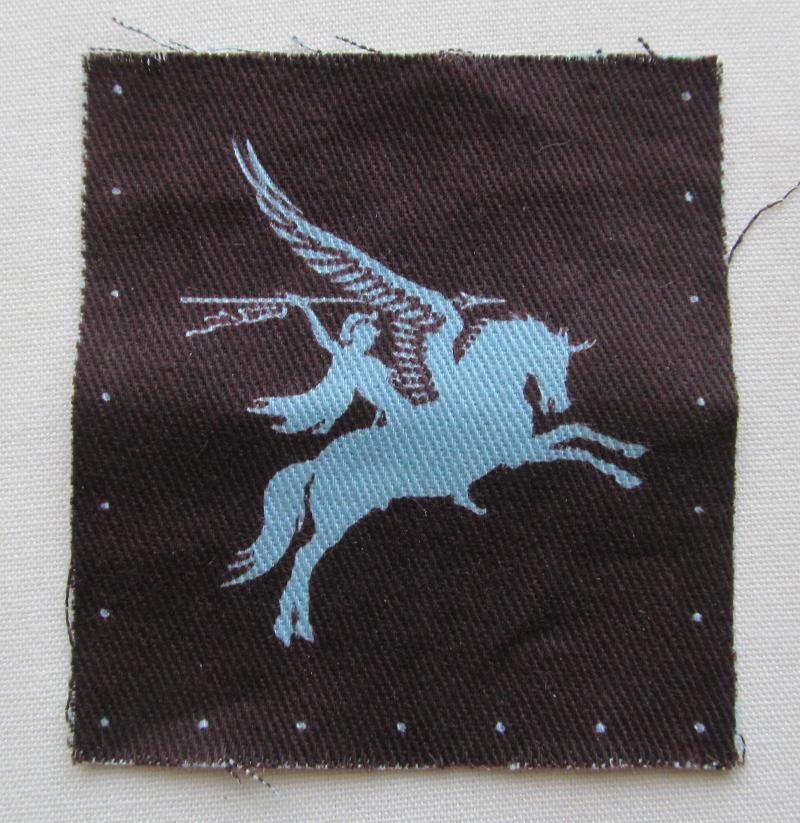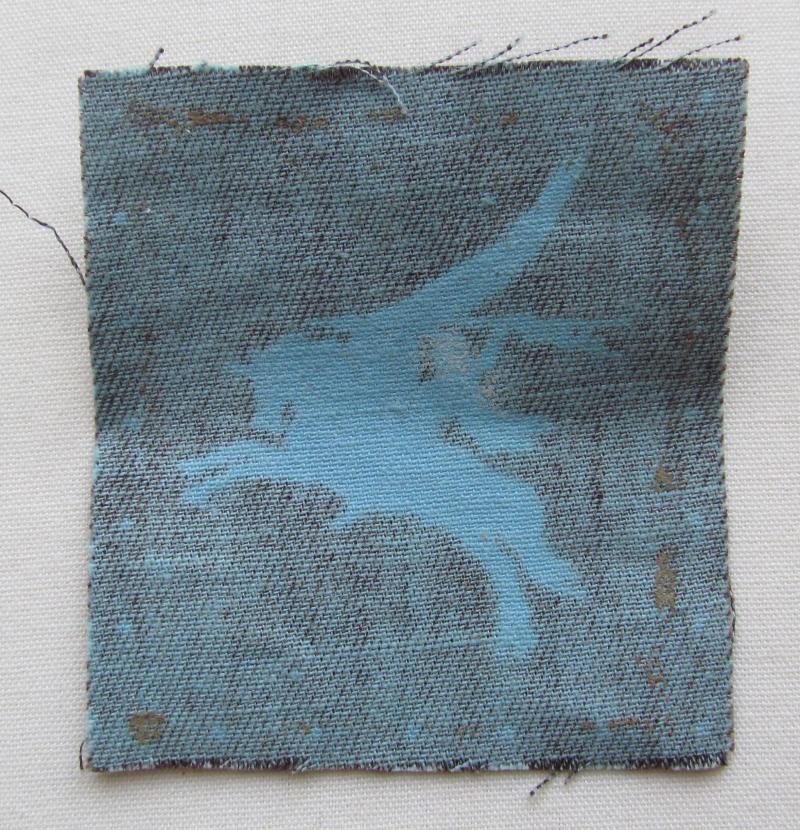1st / 6th Airborne Division WWII
A fine scarce printed formation sign. In mint condition.
The image represents Bellerophon riding Pegasus. It was designed by Edward Seago, the landscape artist and had been suggested for use by Daphne du Maurier, the wife of Major-General F. A. M. 'Boy' Browning, Commander of 1st Airborne Division. The badge was worn by all Airborne troops, in conjunction with the "Airborne strip", a separate strip with "Airborne" in pale blue on a maroon ground, worn below the Pegasus badge. There was no differentiation between 1st and 6th Airborne Divisions. 1st Airborne Division first went into action in North Africa in 1942. 1st Airborne Brigade landed in support of 1st Army landings in North West Africa. The Division then took part in the invasions of Sicily and Italy. The Division's most famous action was at Arnhem as part of Operation Market Garden, the attempt to seize a series of bridges to breach the line of the Rhine in September 1944. The Division's final deployment was as part of the occupation forces in Norway where HQ became HQ Norway Command. 6th Airborne's first action was on D Day when they landed East of the Orne to seize the river and canal crossings and protect the left flank of the invasion. They were withdrawn to the UK in August. Their next deployment was in the ground role during the Ardennes battles over the winter of 1944 - 45 ("Battle of the Bulge"). Their next airborne action was the Rhine crossing in March 1945. With 17 US Airborne Division they formed XVIII US Airborne Corps under command of Maj. Gen. Matthew Ridgeway. Their role in this operation ("Varsity") was to seize the town of Haminkeln and the crossings of the River Ijssel around Haminkeln and Ringenberg, north of Wesel. They then advanced into Germany with the rest of 21st Army Group. Their post war deployment was to Palestine, leaving in February 1948
Code: 59324
120.00 GBP


